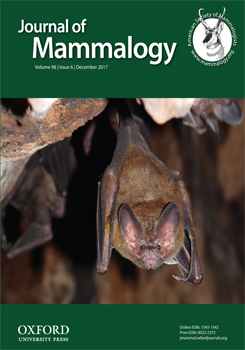Understanding the distributions and environmental associations of rare species is a critical 1st step in their conservation and management. Federally endangered Florida bonneted bats (Eumops floridanus) are endemic to southern Florida and are believed to have one of the most limited geographic distributions of any bat in the United States. We conducted a large-scale acoustic survey of 330 points spread across approximately 38,000 km2 over a 2-year period and used a hierarchical Bayesian approach accounting for imperfect detection to model the distribution and environmental associations of the Florida bonneted bat. Bat occupancy was negatively correlated with the amount of developed land within 5 km of the sampling point and positively correlated with the amount of crop-based agriculture within 5 km of the sampling point. Bat occupancy probabilities increased with the 30-year mean for minimum spring temperature and levels of annual precipitation, and decreased with the 30-year mean for levels of spring precipitation. Bat detection was positively influenced by Julian date and minimum temperature of the survey night. This study offers new insight into the habitat use of this endangered species. Results confirm that predicted changes in land cover and climate will be threats to the Florida bonneted bat.
How to translate text using browser tools
18 September 2017
Impact of land use and climate on the distribution of the endangered Florida bonneted bat
Amanda M. Bailey,
Holly K. Ober,
Adia R. Sovie,
Robert A. McCleery
ACCESS THE FULL ARTICLE

Journal of Mammalogy
Vol. 98 • No. 6
December 2017
Vol. 98 • No. 6
December 2017




